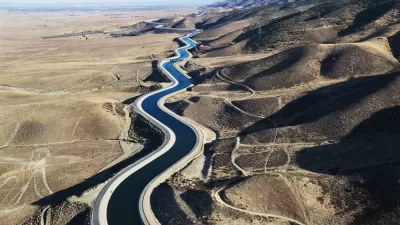Much of the inefficiency surrounding our use and misuse of water derive from entrenched habits formed during previous eras of presumed inexhaustibility of water supplies. Our wastewater treatment approach has traditionally relied on an infrastructure of centralized municipal water plants where tertiary effluent is recycled. These plants consume considerable energy and cost to restore all of the water they process.
Much of the inefficiency surrounding our use and misuse of water derive from entrenched habits formed during previous eras of presumed inexhaustibility of water supplies. Our wastewater treatment approach has traditionally relied on an infrastructure of centralized municipal water plants where tertiary effluent is recycled. These plants consume considerable energy and cost to restore all of the water they process.
This habitual approach to managing water warrants more thoughtful strategies. These could include selectively treating wastewater to different levels of purity based on the varying levels of water purity for specific purposes rather than defaulting to the established approach of one-size-fits-all centralized wastewater treatment.
One emerging strategy of leveraging the efficiency of wastewater treatment is the application of the value park concept. Borrowing from the symbiotic relationship between petrochemical operations and the need for high volume, low cost manufacturing, value parks have become the norm by clustering around the edges of refineries and tank farms in a unified manner to use tertiary chemicals and byproducts to produce everyday household consumer products such as plastics and cosmetics. This consolidation of activity and energy reduces carbon impact of the manufacturing process and uses byproducts that normally would go to waste.
Expanding on the concept, a ‘wastewater value park' envisions a micro-economy of water-dependent business clustered in many urban environments, including local nurseries, small industrial parts manufacturers (aviation, auto) and select processing plants that require less pure water for a variety of purposes from cooling to plating. By integrating our wastewater treatments plants as a catalyst for urban redevelopment, economic opportunity, job creation and environmental stewardship can emerge.
Instead of viewing wastewater treatment plants as isolated facilities, we should look forward to the day when more communities will proudly regard such places as integrators of advanced water technology that helps fulfill the as many goals as possible to change the way cities are built the future.

Alabama: Trump Terminates Settlements for Black Communities Harmed By Raw Sewage
Trump deemed the landmark civil rights agreement “illegal DEI and environmental justice policy.”

Study: Maui’s Plan to Convert Vacation Rentals to Long-Term Housing Could Cause Nearly $1 Billion Economic Loss
The plan would reduce visitor accommodation by 25% resulting in 1,900 jobs lost.

Planetizen Federal Action Tracker
A weekly monitor of how Trump’s orders and actions are impacting planners and planning in America.

Wind Energy on the Rise Despite Federal Policy Reversal
The Trump administration is revoking federal support for renewable energy, but demand for new projects continues unabated.

Passengers Flock to Caltrain After Electrification
The new electric trains are running faster and more reliably, leading to strong ridership growth on the Bay Area rail system.

Texas Churches Rally Behind ‘Yes in God’s Back Yard’ Legislation
Religious leaders want the state to reduce zoning regulations to streamline leasing church-owned land to housing developers.
Urban Design for Planners 1: Software Tools
This six-course series explores essential urban design concepts using open source software and equips planners with the tools they need to participate fully in the urban design process.
Planning for Universal Design
Learn the tools for implementing Universal Design in planning regulations.
Caltrans
Smith Gee Studio
Institute for Housing and Urban Development Studies (IHS)
City of Grandview
Harvard GSD Executive Education
Toledo-Lucas County Plan Commissions
Salt Lake City
NYU Wagner Graduate School of Public Service




























